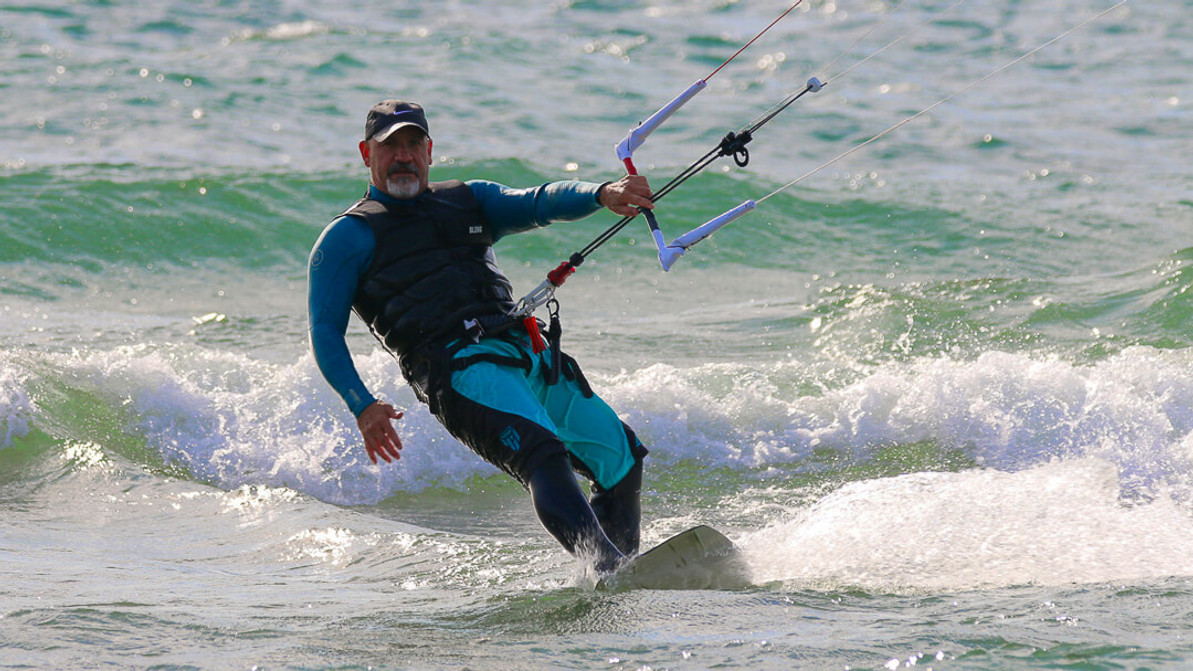What Size Kiteboarding Harness Do I Need?

In kiteboarding, harnesses tend to be the last thing on a kiter’s mind as far as the order of importance. However, the harness should be of utmost importance as it’s a rider's connection point to the kite and the only point in constant contact with you.
The moment you downloop the kite to pull yourself up on your board the harness transfers the power of the kite to your torso and harnesses the power for your entire session. The proper harness and size can make or break your kiteboarding experience.
Finding the proper fit does matter. Once you have found the right harness that integrates well with your unique body shape, finding the right size is key.

Getting the Right Fit With Your Harness
To help ensure you get the right size, something to consider is what will predominately be between your skin and your harness?
- Bathing suit
- Skin
- Rashguard
- Wetsuit
- Impact Vest
Answering this question can help you decide on sizing-up or down if you find yourself at the lower or upper end of a brand’s sizing chart. When riding in colder water, you'll want to take into consideration the added thickness of your wetsuit. Conversely, when riding in warmer water, you don't have to worry about that, as you're likely only wearing a sun shirt.

Sizing by Particular Harness Brand
All brands have a sizing chart and it is important to do your homework as all larges are not the same between brands. Based on the design and materials used, sizes vary between brands. If you ride where you do not need a wetsuit you may be able to size down for a proper fit, whereas if you’re rocking some neoprene you may need to size up. Wearing an impact vest is another key variable to consider as well.
You want a snug fit because your harness will be under load from the power of the kite and it will move or slide up if you do not have the proper fit. With the proper fit, your harness should remain in place while riding twintip, surfing, or foiling.

Trying on Your Harnesses
When trying on a harness at your local shop or beach, you should be able to adjust the straps so that they are wrapped around your hip bones. Extra lengths of the strap after tightening could indicate your harness is too big and too little strap may mean your harness is too small. The proper spreader bar length should integrate with the harness so that the harness wraps around just in front of your hip bones.
You know you have too large of a spreader bar if the bar extends beyond where your hip bone starts. Oftentimes riders will suck in their gut to ensure a snug fit when adjusting their harness straps.
All harnesses fit and feel differently on all riders. It’s best if you can demo a few different harnesses before buying. Once you lock in on a brand/model and take into consideration the sizing tips discussed in this article, you will be ensured session after session of comfort and control.
Please connect with us with any questions that you may have. We're always happy to help.
Thank you, and good winds,
Mr. Jeff
Highlights and Takeaways:
- What are you wearing under your harness?
- Brand sizing differences
- Fitting your harness
Related Links:
- How Does a Waist Harness Differ from a Seat or Boardshorts Harness?
- What Are the Differences Between Hard Shell and Soft Shell Harnesses?
- Shop Kiteboarding Harnesses
Subscription Links:
Click Below to Contact Us:
- P | 800.622.4655
- E | Kiteboarder@MACkite.com
- C | LIVE Chat Messenger

What's Mr. Jeff listening to today?
Recent Posts
-
North Navigator Pro Quick Release | How to Swap Yours Out With Ease
What You Need Before starting the replacement process, ensure you have all the necessary t …18th Apr 2024 -
Foil Drive | Essential Tips to Supercharge Your First Session
The Foil Drive makes your foiling life easier. You'll get up easier and catch more waves, …17th Apr 2024 -
2024 Duotone Slick Wing Review | What's New in This Year's Model?
The Duotone Slick has been a favorite of many for several years. Pros love it for its speed, …15th Apr 2024




